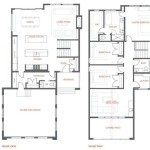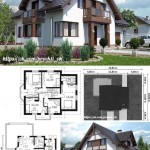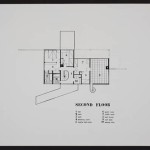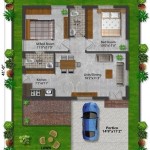Essential Aspects of Solar House Plans: A Comprehensive Guide
The rising energy costs and environmental concerns have drawn attention to the significance of sustainable living. Solar energy has emerged as a promising solution, and incorporating it into your home design can bring numerous benefits. Understanding the essential aspects of solar house plans is crucial for designing an efficient and eco-friendly home.
Orientation and Site Analysis
The placement and orientation of your solar home are vital factors that determine the amount of sunlight it can harness. Analyze the site's latitude, prevailing winds, and surrounding structures to optimize solar exposure. South-facing roofs receive maximum sunlight in the Northern Hemisphere, while north-facing roofs are ideal in the Southern Hemisphere.
Roof Design
The roof structure plays a critical role in maximizing solar energy collection. Sloped roofs are preferred as they allow photovoltaic (PV) panels to be installed at an optimal angle to capture sunlight. Consider using a metal roof system, which can be more durable and energy-efficient than traditional roofing materials.
Passive Solar Design
Passive solar design principles utilize natural elements to reduce energy consumption. Large windows and skylights strategically placed on the south side allow sunlight to penetrate deeply into the house. Thermal mass, such as concrete, bricks, or tiles, absorbs and releases heat slowly, helping to regulate indoor temperatures.
Window Placement and Design
Windows not only provide natural light but also influence solar heat gain. Double- or triple-glazed windows with low-emissivity (low-E) coatings minimize heat loss while allowing sunlight to enter. Consider overhangs or awnings to shade windows during the summer and maximize sunlight in the winter.
Solar Panel Selection and Installation
The type and number of solar panels you need depend on your energy consumption and the available roof space. Monocrystalline and polycrystalline panels are common options, with higher efficiency ratings offering greater energy production. Consult with a solar installer to determine the optimal system size and installation method.
Energy Efficiency Measures
A solar house should be energy-efficient overall to minimize the demand for solar energy. Incorporate insulation in walls, ceilings, and floors. Use energy-efficient appliances, lighting, and heating and cooling systems. Air sealing and weatherstripping can prevent air leaks and improve thermal performance.
Additional Considerations
Besides these essential aspects, other factors to consider include:
- Rooftop space constraints
- Local building codes and regulations
- Financial incentives and subsidies
- Battery storage systems for backup power
By carefully planning and incorporating these elements into your solar house design, you can create a sustainable, energy-efficient, and comfortable home that minimizes environmental impact and reduces energy costs.

Passive Solar House Plan 2 Bedrms Baths 1418 Sq Ft 146 2710

Affordable Passive Solar Planbook Appalachian Energy Center

Solar Adobe House Plan 1870

Misty S 400 Sq Ft 16 25 Solar Off Grid Small House Tiny Floor Plans

Deltec Homes Renew Collection Ridgeline B 1604sf Passive Solar Layout Vaulted Ceilings High Clere House Plans Prefabricated Houses Dream

10k Diy Off Grid Solar Tiny House

Passive Solar House Plans For Our Off Grid Homestead Byexample Com

Passive Solar 1600 0060

Passive Solar House Design Ecoliv

Cabin Style House Plan 1 Beds Baths 704 Sq Ft 497 14 Houseplans Com








